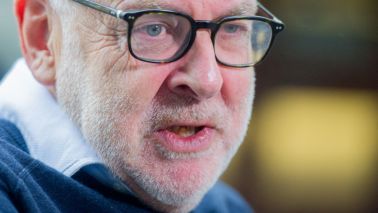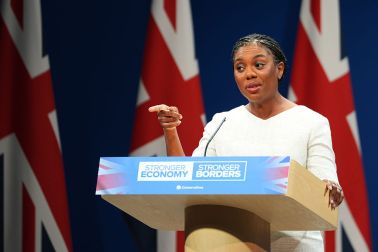The landscape is treeless and windswept but spectacular, with volcanoes, glaciers and geysers, the climate and cuisine nearly always disagreeably challenging: it is sometimes hard to explain the affection and loyalty Iceland has inspired in so many visitors, from Auden and Isherwood in the Thirties to the academic and novelist Sarah Moss in 2009. She too was drawn back when, long after a memorable gap-year visit, she took a job at the university and returned to live there with her family.
My family also lived in Reykjavik, back in the Sixties, when my father was posted there as ambassador. Holidays with our Icelandic and American friends were good fun. This is what I remember: my hair, frozen and clinking around my ears as we walked home from the hot outdoor pools in mid-winter; riding at a fast trot on ponies with wide backs as comfortable as armchairs over the lava fields and across rushing rivers; camping under the midnight sun near a volcanic site rightly called Myvatn (midge lake); skating in the dark on the lake in central Reykjavik — you could be blown right across just by holding your coat open.
Much has changed since those days. The country has suffered a spectacular financial collapse, known there as the kreppa. Reykjavik, back then a small town of concrete or wooden houses with bright corrugated iron roofs, is now ringed, like Miami or Marbella, with speculative blocks of luxury flats, which stand empty and unfinished.
How was it that a nation of austere, hard-working, saga-reciting farmers and fishermen took so readily to the crazy borrowing and lending of recent years? Sarah Moss doesn’t quite answer that question, but in this absorbing account of her year in Reykjavik following the crash (and coinciding, too, with the eruption of Eyjafjallajokull), she sheds light on the strangeness of the country for an outsider as well as on the Icelanders’ ongoing trauma.
With her husband Anthony and their two small sons, she sets up home in a modern flat in one of the deserted half-built suburbs. She worries a great deal about the limitations of available food, although there seems to be far more now than in my day (a French bakery, a Vietnamese noodle bar, sushi — unheard of then) when friends were always told to bring pork sausages and fresh vegetables in their suitcases. She is horrified when she buys whale meat by mistake.
Their son goes to a weird nursery school without books, with ‘separate rooms for girls and boys, because that way they have a place where they are not always defined by gender’, until they find a more rough and ready state nursery with old-fashioned dangerous swings and plenty of plastic toys.
In the midst of all the details of the family’s struggle to settle in — no car, terrible weather, lack of communication in shops — Anthony remains a shadowy and long-
suffering figure: he appears to spend most of the dark Icelandic winter in the over-heated (thanks to free hot water from the geysers) and claustrophobic flat, looking after the children while Sarah teaches Icelanders about 19th-century English literature.
The family go on desperate-sounding outings once spring has arrived, still freezing cold. Sometimes they visit hospitable Icelandic friends. Sarah talks to a woman who talks to elves, another who is the queen of the Icelandic jersey-knitting community. She sees another elf specialist. She hears about the hardship of Icelandic life before and during the war. She senses a wariness of foreigners verging on xenophobia, exacerbated by the kreppa: Polish and Baltic workers are turned upon by Icelanders horrified and humiliated by having, for the first time in their lives, to queue for food parcels.
The family eventually retreat to a more comfortable and familiar life in Cornwall, returning later for a summer trip, to complete a lively, if sometimes depressing, snapshot of a curious and beautiful country, accustomed to every kind of geological challenge, but now reeling from its own self-inflicted, man-made disaster.





Comments